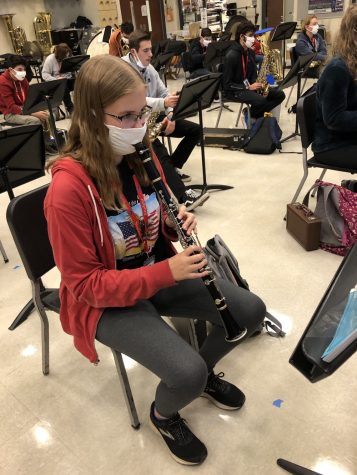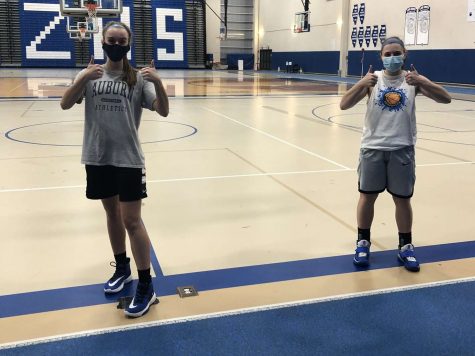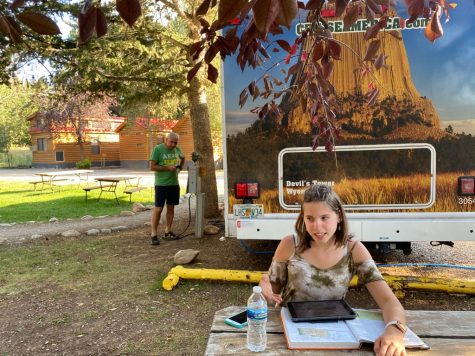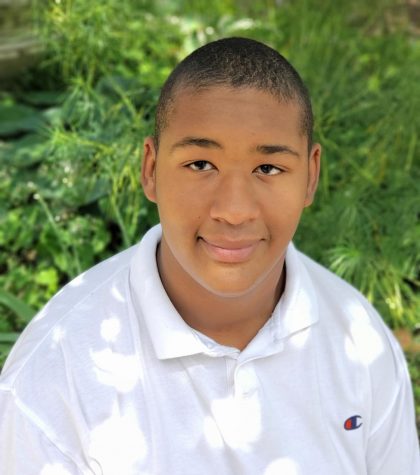3 students, 3 environments, 1 school
Students react to chosen learning opportunities
Due to COVID-19, students were given two learning options for this school year; learn in person some days, or learn remotely.
Learning in person

Many students chose to go to school in a hybrid model. Grace Trumbull, junior, is one of many students that decided to learn in a hybrid model as some classes, like band and choir, are easier to practice in person.
“Singing and playing an instrument has been really disappointing during e-learning just because I have to practice by myself, or play along with recordings, it’s just not anywhere near close to the same as playing with my bandmates,” Trumbull said.
While Trumbull is able to play songs with her classmates, interacting with people that she has not seen in person for months has been weird, according to Trumbull. Now that Trumbull is back in the building, it makes her feel “totally different” being able to see her friends in person again.
“I feel like it’s [the] beginning of switching back to normal,” Trumbull said. “It was uncomfortable walking back into school, but when I was [at school] I felt that many people thought we were conversing or talking to each other like the good old days.”
While Trumbull says returning to school makes her learning experience more normal, she also notes the differences from previous school years. These measures include limiting the number of students in the building, along with having extended passing periods. Trumbull agrees that these measures help her feel safe while in the building.
“The idea that a third of the students are only in the building at a time really makes me feel safe,” Trumbull said. “The extra care and thinking makes us realize how everyone just wants us to be back in the building.”
Learning at home — Playing at school
For most student-athletes, their season has been adjusted or postponed due to COVID-19. Back in July, after one day of contact camps, students were sent home due to a student testing positive. Four months later, low-risk sports like cross country and tennis have finished up their seasons.

For Nina Guarisco, senior, and her family, they discussed about if Guarisco was going back to school. However, Guarisco’s family decided on her learning remotely, at least for the first semester.
“We decided to go with this new learning model because [my family] felt that it took some of the variables out of the equation,” Guarisco said. “There’s so much to figure out, and we thought that e-learning would take away some of those variables like safety and getting accustomed to things.”
While Guarisco is learning remotely, she is also coming to school for contact camps for basketball. Going to school for a few hours a week “really helps with the social aspect” that Guarisco says she struggles with while learning at home.
“I miss seeing my friends every day,” Guarisco said. “I text with them and I FaceTime [them], but it’s just very different not being able to see my friends all the time. I [also] miss sitting in class with my teachers before class really started and talking to them and just [being able to] talk to someone without a screen.”
As Guarisco’s season nears she is “both excited and nervous.” This will be Guarisco’s last season as a high schooler, and she says she “really looks forward to playing.” While Guarisco’s season has been postponed, Guarisco looks on the bright side of things about her sport and her health.
“Wearing our masks at our contact camps is better conditioning for us, even if COVID-19 was not a threat,” Guarisco said. “If we play with masks — which limit our breathing — we’re going to be in great shape afterward.”
Learning at home

Other students like Vanessa Kovatchev, sophomore, made their decision in part because of their personal learning style. Kovatchev says that learning at home would be more successful for her.
“For me, one of the advantages of e-learning is that I get so much more done at home than at school,” Kovatchev said. “I am so much more focused [on] my schoolwork, and I also have more time for myself.”
While Kovatchev says she learns better remotely, another main reason for not returning back to school was because “there is no vaccine,” Kovatchev said. “My family and I don’t want to take that risk of getting sick.”
By keeping herself at home, Kovatchev says she is able to learn better. Learning is easier at home, according to Kovatchev, but trying to engage with other students and friends is more challenging. but it also makes social interactions harder, Kovatchev says.
“I miss talking in person because it is better communicating in person [rather] than remotely,” Kovatchev said. “Whenever I do group projects in class, their screens are either black or muted and they [also] don’t communicate very well or at all.”
COVID-19 may have split up students, but it did not stop students from learning.

As a senior, this will be Adam's third year in the journalism program, and second year of being on staff, where he is taking on the role of the Live Media...
